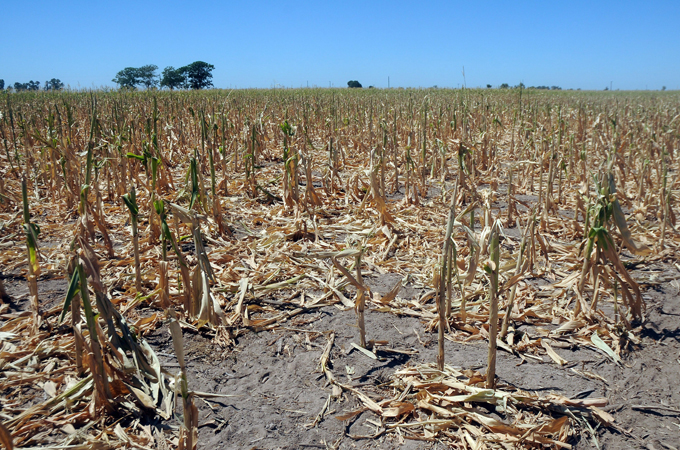Welcome rain hits Argentina
The wet weather brings relief for the farmers in the drought-hit country.

 |
| La Nina conditions have triggered a severe drought in one of the world’s biggest exporters of food [EPA] |
Argentina is the world’s biggest exporter of soymeal and soyoil, but this year the crops have been severely depleted due to a shortage of rain.
Back-to-back droughts have left the farmers despairing, watching their crops wither away.
Keep reading
list of 4 itemsCould shipping containers be the answer to Ghana’s housing crisis?
Thousands protest against over-tourism in Spain’s Canary Islands
Holding Up the Sky: Saving the Indigenous Yanomami tribe in Brazil’s Amazon
The recent droughts were caused by the current La Nina conditions. La Nina is a slight cooling of the surface waters of the Pacific Ocean, which affects the weather around the world. For Argentina, La Nina is known to bring drier conditions, which often leads to drought.
When the La Nina redeveloped in July, the farmers in the country knew that their crops would suffer, especially as the previous La Nina had only vanished three months earlier.
Argentina is the world’s second-biggest corn exporter after the United States, and the third largest soybean supplier. One quarter of its export income from soy alone. Taxes on grains shipments represent about 10 per cent of state revenue.
Clearly, it’s not just the farmers who keep a very close eye on the weather in the vast crop-growing region.
When La Nina strikes for two consecutive years, the conditions continue to deteriorate into the second year. In the first year, the crops can make use of the water reserves that are held in the soil, but in the second year even these will have been depleted.
This summer has been just as dry as feared in Argentina, particularly in December and January.
February brought some relief, as heavy rain has brought some welcome moisture to the fields, and at the beginning of March, more thunderstorms brought further significant rain. However, for some farmers this rain has come too late.
The soy that was planted early (in October of last year) is almost ready to be harvested, but some farmers gambled with the weather conditions and chose to plant later in the season.
This late-planted soy has greatly benefited from the recent rains, but it does run the risk of being affected by frost if the winter weather takes hold before they can be harvested.
The outlook for next year is far more promising. The La Nina conditions are expected to ease in the coming few months, to be replaced by El Nino later in 2012.
This would bring an increase in rainfall across Argentina, and ensure that the 2012-13 soy harvest will be a bumper crop. There are even some who are forecasting that it could even exceed the record gathered two years ago, in another El Nino year.